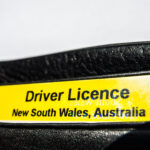Should a Special Licence Be Required to Drive an ‘Ultra High-Powered Vehicle’?

On 1 December 2024, holders of South Australian driver’s licences were required to hold a special U-class licence for vehicles classed as ‘ultra high-powered vehicles’ (or UHPVs).
Failing to hold such a licence when driving an UHPV amounts to a traffic offence in that state.
What is an ultra high-powered vehicle?
The latest updates define an ultra high-powered vehicle as any vehicle, other than a bus, motorbike, or motorbike that has:
- a gross vehicle mass of up to 4.5 tonnes, and
- a power-to-weight ratio of 275 kilowatts per tonne or more.
This broad definition includes many supercars and hypercars, as well as a number of smaller, lighter vehicles which many may not consider to be ultra high powered.
If a vehicle was manufactured after 2010, car owners can check its power to weight ratio using an online checker and entering the Plate Number or Vehicle Identification Number (VIN).
Eligibility for a U-Class Licence
To be eligible for a U-Class licence, a person must hold a full (unconditional) licence or probationary car (C-Class) licence or higher.
Those who only have a motorcycle licence cannot apply.
Obtaining a U-Class Licence
Obtaining a U-Class licence requires the driver to successfully complete an online course, and pass the written exam contained in it.
There is a once off $61 fee for the course, it must be taken within 12 months of enrolment and is said to take between 30 and 45 minutes to complete.
The course can be undertaken an unlimited number of times and those who successfully complete it must pay $20 to obtain the licence.
Exemptions to Holding a U-Class Licence
Exemptions to the requirement for a U-Class licence apply to full C-Class licence holders who are:
- Employed at a motor vehicle-related workplace and need to drive a UHPV for employment purposes, or
- Test-driving a UHPV from a motor vehicle dealer.
The first exemption applies to individuals who are either self-employed or carry out contract work for services. A ‘motor vehicle-related workplace’ is a business that involves the inspection, transport, sale, repair, trade, rent, or lease of motor vehicles.
The second exemption applies where an employee is in the front passenger’s seat throughout the test drive and does not exceed 100km/h in speed.
Drivers or owners of ultra-high-powered vehicles do not specifically need to apply for an exemption. However, they must be able to prove to the police that they can meet the criteria every time they operate the vehicle. Owners may also need details or a signed letter for evidence from an employer as to their need to drive a UHPV for their employment.
Drivers eligible for a U-class licence must hold a full or probationary Car class licence or higher. Those with a motorbike licence or learner’s permit cannot apply for the U-class licence.
Driving a UHPV with a Disabled Automated Intervention System
Section 44C of the Road Traffic Act (SA) prohibits a person from driving an ultra-high-powered vehicle with an automated intervention system disabled. Such systems include anti-lock braking, automated emergency braking, electronic stability control, and traction control.
The offence carries a maximum penalty of $5,000 and 6 demerit points.
Defences to Driving a UHPV with a Disabled Automatic Intervention System
Defences to the offence include that the driver:
- Did not cause or contribute to the disablement of the automated intervention system,
- Did not know that the automated intervention system was disabled, and
- Could not be reasonably expected to have ascertained whether the automated intervention system was disabled.
Cars That Fall Within the Definition of UHPV
Vehicles classified as ultra-high-powered vehicles are those with a gross vehicle mass upwards of 4.5 tonnes and a power-to-weight ratio of more than 275 kilowatts per tonne.
Drivers can use the UHPV Look-Up function on the My licence website to check if their vehicle is classified as a UHPV according to the registration number.
Drivers can calculate their vehicle’s power-to-weight ratio by dividing the vehicle mass in kilograms by the engine power in kilowatts and multiplying by 1000.
The South Australia government has provided a link for drivers to see if their plate number or VIN is associated with an ultra-high-powered vehicle status or if they are in the clear.
Common car models, such as the Honda CRX, Mazda Rx-8, Nissan 350Z, and Volkswagen Passat, are all listed in the ‘vehicles included in the definition of high powered vehicles (known as restricted vehicles in schedule 1 of the Motor Vehicles (High Powered Vehicles) Notice 2015.






